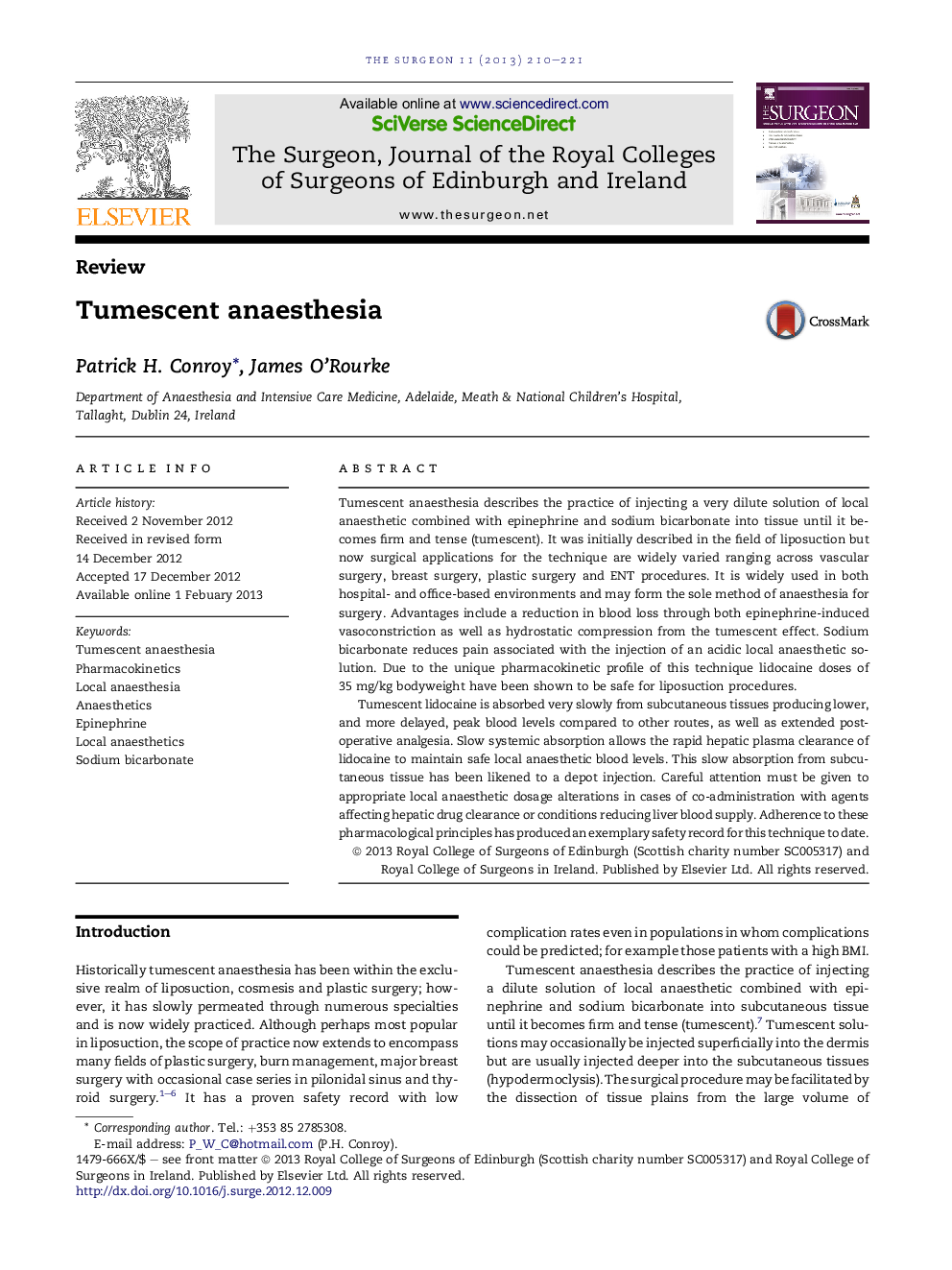| کد مقاله | کد نشریه | سال انتشار | مقاله انگلیسی | نسخه تمام متن |
|---|---|---|---|---|
| 3178617 | 1200395 | 2013 | 12 صفحه PDF | دانلود رایگان |

Tumescent anaesthesia describes the practice of injecting a very dilute solution of local anaesthetic combined with epinephrine and sodium bicarbonate into tissue until it becomes firm and tense (tumescent). It was initially described in the field of liposuction but now surgical applications for the technique are widely varied ranging across vascular surgery, breast surgery, plastic surgery and ENT procedures. It is widely used in both hospital- and office-based environments and may form the sole method of anaesthesia for surgery. Advantages include a reduction in blood loss through both epinephrine-induced vasoconstriction as well as hydrostatic compression from the tumescent effect. Sodium bicarbonate reduces pain associated with the injection of an acidic local anaesthetic solution. Due to the unique pharmacokinetic profile of this technique lidocaine doses of 35 mg/kg bodyweight have been shown to be safe for liposuction procedures.Tumescent lidocaine is absorbed very slowly from subcutaneous tissues producing lower, and more delayed, peak blood levels compared to other routes, as well as extended postoperative analgesia. Slow systemic absorption allows the rapid hepatic plasma clearance of lidocaine to maintain safe local anaesthetic blood levels. This slow absorption from subcutaneous tissue has been likened to a depot injection. Careful attention must be given to appropriate local anaesthetic dosage alterations in cases of co-administration with agents affecting hepatic drug clearance or conditions reducing liver blood supply. Adherence to these pharmacological principles has produced an exemplary safety record for this technique to date.
Journal: The Surgeon - Volume 11, Issue 4, August 2013, Pages 210–221